The words “full moon” in many languages

It is said that there are more than 6,000 languages worldwide (this is hard to imagine) and it is a fascinating concept to think, there are probably as many words for “full moon”.
Here we begin our little journey to the full moon. A few words about the fascinating quest of the greater purpose, that includes the full moon circulating through our lives. In layman’s terms and not always scientific (astronomy experts – don’t look too closely!). We would like to wish you illuminating moments. Enjoy!


It is said that there are more than 6,000 languages worldwide (this is hard to imagine) and it is a fascinating concept to think, there are probably as many words for “full moon”.
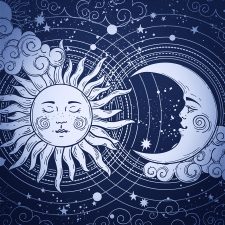
A full moon is when the Sun and the Moon are facing opposite, being in opposite direction from an Earth perspective.
This might feel astonishing if one imagines that the Moon is on one side, the Sun on the other and the Earth in between? Shouldn’t the Earth throw a shadow onto the Moon? Bingo – this is exactly what she does! But only when the Moon is exactly on the Earth orbit, the so called “ecliptic”. When this takes place, we speak of a lunar eclipse!
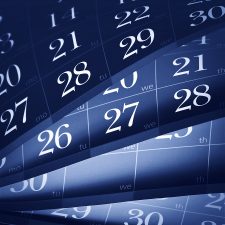
The Moon needs 27.33 days to circle around the Earth. Something that is also referred to as “sidereal time”. But because the Earth orbits the Sun, just like the Moon orbits the Earth, the Moon has to travel two further days in order to resume the same position to the Earth and Sun. This is then called the “sidereal time”. In order to determine the point of time of the reoccurring full moon, the sidereal time serves as basis.
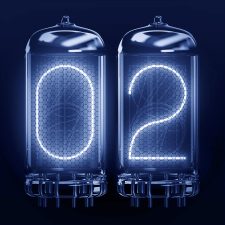
We already know now that the moon month is mostly shorter than the calendar month, being on average approximately 29.5 days. If full moon falls on the first or second of a month, it is possible that another full moon occurs in the same month, for instance in July 2004:
Friday, 2 July 2004, 01:08:54 pm
Saturday, 31 July 2004, 08:05:06 pm
This event is also known as “blue moon”.

The answer is: “everywhere at the same time”. This refers to the so called Universal Time (UT) though, which is used for general astronomical events. We have already learnt that full moon is an astronomical event, where the moon, sun and the earth play a role by being in a specific position. So, full moon takes place at a specific time in the outer space. This point of time is specified by astronomers namely by the Universal Time.

There are multiple ways of approaching this question. If we look at it from a purely theoretical standpoint, we might be tempted to say that the full moon is infinitely short, since the phases of the moon are changing continuously. The moon is not yet quite full shortly before the full moon, and is already waning shortly afterwards.
However, there is a practical aspect that lets us quantify the full moon as a finite and measurable span of time: Since the Sun is significantly bigger than the Moon, its rays are able to reach just a little over half of the Moon’s surface. This means that the timespan in which the visible side of the Moon’s surface is irradiated (as seen from Earth) is longer than infinitely short.

Whether scientists, astrologers or esoterics, they agree on one thing: the moon influences earth and life on earth. For instance, it regulates the tides through its magnetism. Also continents feel the consequence of this magnetism and either raise or lower their position sometimes up to 26 cm.

In nature it is a known fact: for some animal species, mating takes place at full moon. However, the examples that can be found on this subject are rather simple. Full moon serves in some cases indirectly as the cause (for instance through the high water levels during the tides that the horseshoe crab uses to deposit its eggs) or also as the signal for both sexes of a species to begin at the exact same time to safeguard their future existence (a particular type of fly or also corals). It is understood that also wolves are led by full moon when it is time to mate.

… that people are looking for an argument at full moon or are especially happy …
… that if full moon is surrounded by a haze, a person dies …
… that you raise your hat three times to the moon (being a man) or you make a curtsey (being a woman), in order to protect yourself from misfortune until the next full moon …
… that whoever does not chink glasses with full moon at least once, does not deserve any happiness [Greek toast] …
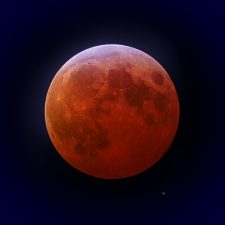
During a lunar eclipse, the Moon moves through the shadow of the Earth. Which means, that the Earth is positioned quite exactly between the Sun and Moon and casts its shadow onto the Moon. This is only possible at full moon and if some other requirements are met. Depending on whether the moon passes the partial or the core shadow of the Earth, we speak of a partial or total lunar eclipse.

Sir Charles Spencer Chaplin (1889–1977) is considered one of the first movie stars ever and made film history with his acting and his works. He is also one of the few artists who managed the transition from silent films to sound films.
Because of using archetypal imagery and symbols in his films, it is natural that the moon could also play a part somewhere. We found four references:

Although, one could easily presume that full moon influences the reproduction of many creatures, this has really only been proven for some species. One assumes this is the case with wolves, specific insects or crabs and also many humans vow not being able to do anything other than to look for the closeness of the other (or the same) sex at full moon. But absolutely certain are scientist only about one animal species that may not even be considered an animal by many: the corals. Here it has been established that reproduction is dependent on water temperature and moon light.

The »sunfish« is called »moonfish« in many languages. It is the biggest and heaviest bony fish in the world, weighing up to 2,500 kg and showing off up to 3 m length and 4 m height! It can grow over 100 years old. Its Latin name »mola mola« derives from its shape, which reminds of a »millstone«, but apparently, also the Moon was the force behind the naming:
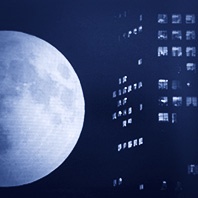
“Koyaanisqatsi” is a film by the American director Godfrey Reggio, which was made between 1975 and 1982. The term “ko-yaa-nis-qatsi” derives from the language of the Hopi tribe and means “life out of balance” or “life in turmoil”. The movie manages without words, conveys its message with powerful images and haunting music by Philip Glass. It is a critical film that serves as eye-opener for the dark side of our civilization through comparing of poetic impressions of nature and images of the consequences of human activity. “Koyaanisqatsi” is the first part of a trilogy, followed by “Powaqqatsi” (1988) and “Naqoyqatsi” (2002).
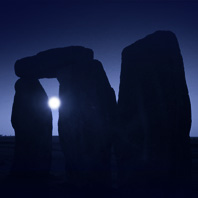
Everyone is familiar with the silhouette of the Stonehenge rocks in the southern English county of Wiltshire, one of the truly ancient structures of human kind that continues to fascinate because of its archaic construction and mystical presence. Maybe it reminds us people of our origin and of something we often tend to forget amid our hectic everyday world: simplicity.
At the same time, the building of Stonehenge has been everything but easy back then. The age of the grounds is estimated to be more than 5000 years. Experts assume, it took many millions of working hours to dress and transport the up to 50 tons heavy rocks by hand and to erect them in the well-known formation. In particular the lintels, on top of the upright stones, leave us in awe.
Let’s begin the New Year 2011 with the opening of the full moon blog. A true innovation to the full moon pages.

For everyone, who is not quite sure what a blog is, let’s say it is a kind of an Internet diary. The word »blog« is an abbreviation of »weblog«, which again derives from »web« (for Internet) and »logbook«, a term used in maritime shipping for recording daily events. Interestingly enough, it is mentioned in WIKIPEDIA that logbooks are of great importance in legal cases involving maritime commercial disputes, and therefore mandatory to be kept and not on a voluntary basis. As blogger (name of someone who writes in a blog), we certainly would not keep this rule, but encourage spontaneous participation and think it should be fun, and whenever possible, we will establish a connection to the full moon.
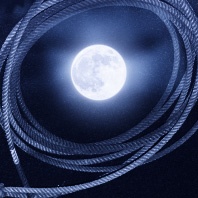
There are movies that live on Mount Olympus. The movie “It’s a wonderful life” by Frank Capra from 1946, belongs to them. However, at the time of the release, shortly before Christmas of the aforementioned year, this had not been the case yet. Commercially, this movie was a flop and did not turn into a cult movie until decades later. Today, the story about George Bailey (played by James Stewart), who does many good deeds in a small American town, quarrels with his destiny on Christmas Eve and eventually, through meeting an unconventional angel, learns to recognise the value of life, is considered to be one of the best movies in motion picture history.

What does an astronaut has on his wrist? You are not going to believe it, but it is something completely earthly: a watch. Because time is, next to the coordinates which show his position in space, the most important information for his mission and his life. And although, astronauts are surrounded by all kind of instruments, it has already been thought of in the beginnings of space travel to equip the crew with wrist watches. Of course with special models only.
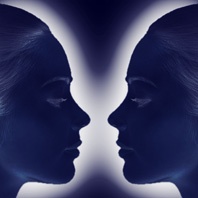
There is a wide spectrum of views and opinions about how the moon may influence human life and it is in the very nature of things, that these opinions lead to discussions. During the course of the years, we got acquainted with many different viewpoints and are trying to give room to these diversities on these pages.
Let’s imagine two people for example, a sceptic, who analyses sensibly and critically, and a mystic who allows his actions to be guided by faith and dedication. Let’s have both people answer the question, whether principally, full moon has an effect on human beings.

When inviscid lava flows out of the volcano, it is possible that cavities are created inside the conduits, due to the different speeds of flow and temperatures. It is like a roof being formed above the flow of lava, which continues to flow inside. After cooling of the rocks, tubular cavities remain.
This phenomenon exists on Earth when volcanoes erupt, and scientists assume that those tubes and cavities could also be prevalent on the Moon, dating from a time when vulcanoes were still active there. The lesser gravity benefited the formation of the tubes and might have also contributed to the fact that there could be kilometer-sized cavities underneath the Moon’s surface.

The antlion is the larva of the myrmeleon, which belongs to the net-winged insects. This insect grows to be 0.6 inches and predominantly stands out because of its large jaw pincers, which let you anticipate its predatory disposition. The antlion is famous for its sophisticated method catching prey. It digs funnels in the sand that function like a trap for other insects (i.e., ants or spiders). When prey steps on the edge of the funnel, the antlion begins to throw sand on the animal from the bottom of the funnel. The thereby created movements, activate the slipping of the funnel walls and transport the prey directly into the fangs of the antlion, who then kills them with its poison.